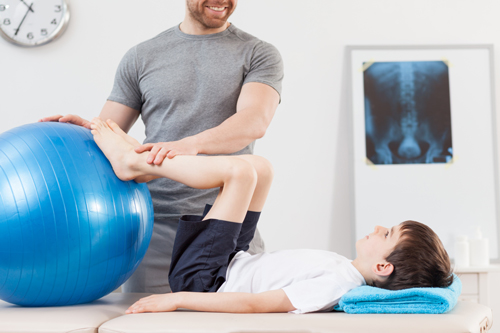
Osgood-Schlatter disease (syndrome), a common cause of knee pain in as many as one in five children and young athletes, especially boys, 10 to 15 years of age, usually occurs after a period of quick growth coupled with intense physical or sporting activity. Children who participate in running and jumping activities experience a greater strain on the patellar tendon, leading to inflammation and pain when it pulls the patella away from the shinbone. To close the gap, the body produces new bone, creating a bony lump. The condition usually clears up once growth stops and the tendons are stronger, but it can continue into adulthood. While Osgood-Schlatter disease typically occurs in just one knee, it sometimes develops in both knees. The discomfort can last from weeks to months and may recur until the growth period has ended. Symptoms include pain, swelling and tenderness at the bony prominence just below the kneecap, and tightness of the surrounding muscles, especially the quadriceps in the thigh.
This pain worsens with activity, such as running, jumping and climbing stairs, and improves with rest. Depending on the severity of the disease, techniques that can help reduce the child’s discomfort might include
- rest and immobilization as needed during bouts of pain
- ice after physical activity • anti-inflammatory and pain-relieving medications as prescribed by their physician
- a knee brace with a patellar tendon strap below the kneecap to stabilize the patellar tendon during activities and distribute force away from the shinbone
- stretching exercises for the quadriceps and hamstrings
- a contoured pad to protect the knee in more severe cases
It is important that your child avoid activities that cause a lot of pain, especially ones that involve a great amount of jumping, squatting or kneeling. Weight-bearing exercises can worsen symptoms. Although the injury can be upsetting to children and athletes who suffer from its effects, a tailored program of physical therapy and appropriate rest can relieve symptoms until the process resolves.
————————————————-
